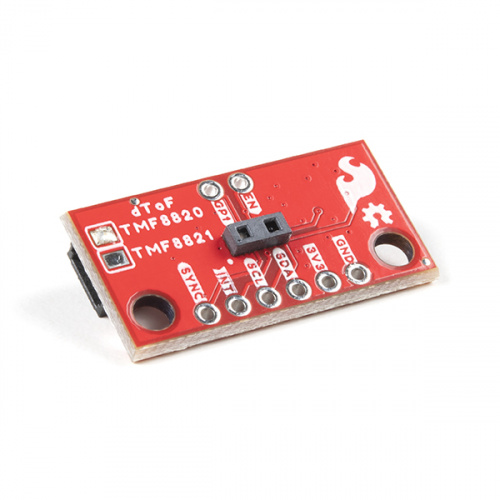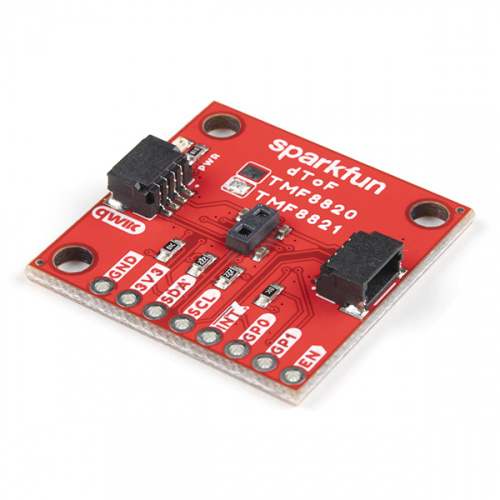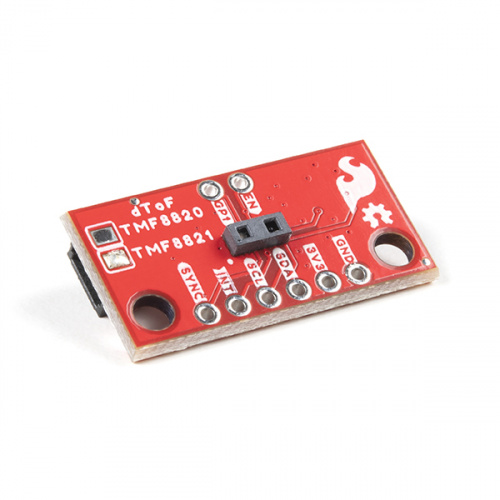Qwiic dToF Imager (TMF882X) Hookup Guide
Introduction
The SparkFun Qwiic dToF Imager - TMF8820/TMF8821 are a direct time-of-flight (dToF) sensors that includes single modular package with associated Vertical Cavity Surface Emitting Laser (VCSEL) from AMS. The dToF device is based on Single Photon Avalanche Photodiode (SPAD), time-to-digital converter (TDC) and histogram technology and achieves 5000 mm detection range. Due to its lens on the SPAD, the TMF8820 supports 3x3 multizone output data while the TMF8821 supports 3x3, 4x4, and 3x6 multizone output data. The lens on each dToF Imager provides a very wide, dynamically adjustable, field of view. A multi-lens-array (MLA) inside the package above the VCSEL widens up the FoI (field of illumination). All processing of the raw data is performed on-chip and the TMF8820/TMF8821 provide distance information together with confidence values on its I2C interface. The high performance on-chip optical filter blocks most of the ambient light, and enables distance measurements in dark and sunlight environments.
These sensors are great for projects that such as distance measurement for camera autofocus - Laser Detect Autofocus - LDAF (mobile phone), presence detection (computing and communication), object detection and collision avoidance (robotics), and light curtain (industrial).
Required Materials
To follow along with this tutorial, you will need the following materials. You may not need everything though depending on what you have. Add it to your cart, read through the guide, and adjust the cart as necessary. Note that the following wishlist includes the RedBoard Artemis and the TMF8821. Depending on your application, you can adjust the cart for a different processor board or sensor version.
Suggested Reading
If you aren't familiar with the Qwiic system, we recommend reading here for an overview.
 |
| Qwiic Connect System |
We would also recommend taking a look at the following tutorials if you aren't familiar with them.



